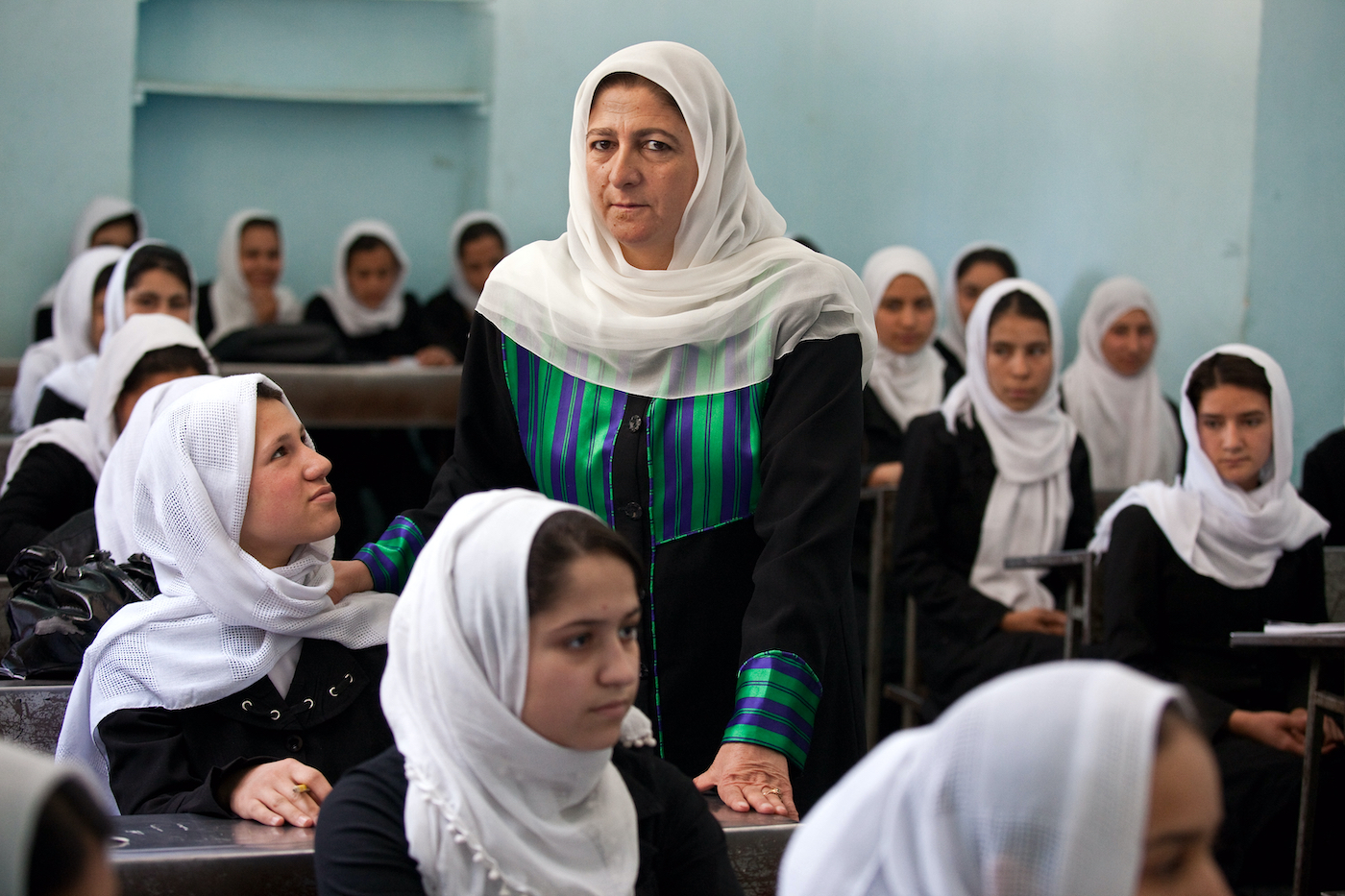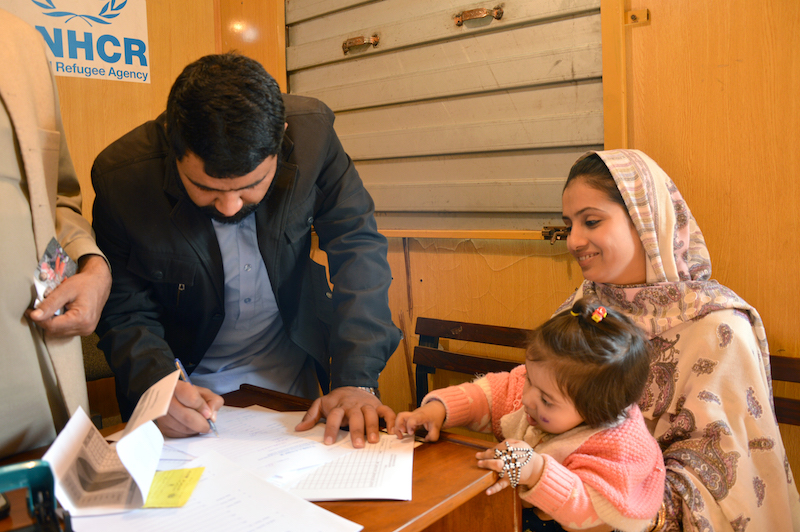Recommended
In an earlier post, we (Susannah and Lee Crawfurd) analysed what the withdrawal from Afghanistan could mean for girls’ education. Since then, calls have been made for the international community to protect and support education for Afghan children at home and abroad. Last week Gordon Brown urged the G7 to continue funding education for girls in Afghanistan, as long as the Taliban government allows girls to attend school.
We agree, but with caveats. This kind of diplomatic pressure could certainly help to keep girls in school, though their safety in and around school must be prioritized. At the same time, making support for education conditional on the Taliban meeting G7 demands risks education aid being cut off altogether. This could limit education opportunities for those most at risk in Afghanistan and fails to address the needs of the millions of Afghan children displaced outside of Afghanistan.
Instead we urge the G7 and the broader international community to step up their own hosting of Afghan refugees, to ensure that education is included in humanitarian responses, and to embrace local solutions as they move to protect education for Afghan girls and boys.
Donor support for education in Afghanistan peaked between 2010 and 2014
Education aid money for Afghanistan has fluctuated considerably since the fall of the last Taliban regime, particularly from the UK and Japan. This is especially challenging in a fragile state. And past support has often been tied up in military and diplomatic efforts, for better or worse.
Figure 1. Donor aid to education in Afghanistan
Notes: Disbursed value (constant USD). A large share of German education aid is scholarships for Afghans studying in Germany.
Source: Authors’ analysis of OECD DAC Creditor Reporting System data
The international community’s approach to education in Afghanistan needs to change. We provide five urgent recommendations that will help Afghan children be safe and remain in education.
1. Donor countries must welcome more Afghan refugees and help refugee children access education
First and foremost, donor countries can increase the number of Afghan asylum seekers they allow into their countries. Over the past 30 years, more than 90 percent of Afghan refugees have been hosted by just two countries—Pakistan and Iran (Figure 2). In 2020–2021, of the 2.6 million displaced Afghans, more than 2 million were hosted by Pakistan and Iran while together Germany, Austria, France, Sweden, and the UK hosted roughly 260,000. Over the 28-year period between 1987 and 2015, the US granted resettlement to only 16,400 Afghans.
Globally, children comprise more than half of those experiencing forced displacement and more than a third of children arriving in Europe in early 2020 were unaccompanied. In an analysis of refugee children’s educational experience prior to resettlement in the US, refugee education expert Sarah Dryden-Peterson suggests that teachers and schools should be aware that refugee children have likely experienced limited and disrupted educational opportunities, language barriers to educational access, inadequate quality of instruction, and discrimination in school settings. Many have also experienced war-related violent traumas and may be without parents. Children who have experienced conflict and displacement will require additional support to access and thrive in school, which needs to be funded.
2. Donors must include and properly fund education in humanitarian responses
In the coming weeks and months, the international community will mobilize humanitarian resources to support Afghans who remain in Afghanistan as well as those displaced in other countries. Education must be included—and funded—in these responses from the start. Humanitarian aid allocated to education has increased in recent years (although not as a proportion of all humanitarian funding), but it falls well short of what’s needed. In 2019, education spending accounted for just 2.6 percent of total humanitarian aid, resulting in a nearly 40 percent shortfall of the funds requested in humanitarian response plans.
Figure 3. Education funding as a share of all humanitarian funding
Source: Figure reproduced based on estimates Zubairi & Rose, 2020.
Given the scale and speed at which the current crisis is moving in Afghanistan, the international community should prioritize channeling funds through organizations with the expertise and ability to respond nimbly in an evolving situation. Organizations like UNHCR, UNICEF, Education Cannot Wait (ECW), and other non-governmental partners are often able to move swiftly and target education needs in highly uncertain and transitional conditions in ways that traditional donors cannot.
While there will certainly be short-term and emergency needs, this is likely to become a protracted situation in which long-term support is needed. Implementing short-term education programs and subsequently taking them away can cause harm in the long-run. (Interestingly, girls enrolment in school plateaued around the same time as education aid declined.) As much as possible, the education response should take a medium-term approach and begin planning longer-term sustainable solutions moving forward. This will require close coordination between humanitarian, development, and other partners, starting now.
3. Increase funding for education in low- and middle-income countries hosting Afghan refugees
Most Afghans who leave Afghanistan are at least temporarily displaced in neighboring countries, particularly Pakistan and Iran. The international community has a responsibility to increase education aid to low- and middle-income countries hosting Afghan refugees.
Ensuring that refugee children have access to school—regardless of where they are in the world—is outlined as a right in both the 1951 Refugee Convention and the 2016 New York Declaration for Refugees and Migrants, as well as a basic human right for all children in the UN Universal Declaration for Human Rights. Despite commitments made in global declarations, the education opportunities available to refugees vary substantially across countries. For example, refugees in Uganda have full access to local schools, while those in Bangladesh have little to no access to education.
Donors can use diplomatic channels and financial support to encourage host governments to ensure that refugees have safe access to schools. Alongside, the international community can also support durable solutions for refugee education by encouraging host countries to include refugees in education sector development plans and other long-term education plans, as well as ensure that consistent and sustainable funding is available to support these efforts.
4. Prioritize keeping children safe at school
Even prior to the recent Taliban takeover, the Coalition to Protect Education from Attack documented more than 500 attacks on schools, students, or education staff in Afghanistan between 2015–2019. As a result, schools are not always perceived as safe places for girls, despite largely favorable attitudes among Afghan citizens toward girls’ education. As Dana Burde’s work in Afghanistan shows across multiple projects, parents are willing to send girls to schools when school environments are perceived as safe and appropriate for girls.
The vulnerabilities which often arise following conflict and fragility can impact men and women differently and direct threats to schools and the perceived danger of school routes can be heightened in humanitarian contexts. Conflict, instability, and displacement increase risks of gender-based violence and early marriage, and may increase fear among parents that girls will be harmed if they attend school. Education responses need to identify additional sources of vulnerability and should prioritize funding activities engaged in gender-sensitive and safety-oriented solutions.
5. Reflect on lessons from the past and work with local solutions to sustain access to education
We have learned from the past decades of Western occupation in Afghanistan that not all well-meaning efforts by international actors have positive results. Research suggests that education projects implemented by the US military as part of post-Taliban reconstruction efforts increased instability (in contrast, for example, with health projects, which reduced instability). Thousands of schools were constructed—part of nation-building and good-will efforts to ‘win the hearts and minds’ of Afghans—many of which remained unused for years due to poor placement and a lack of resources to hire teachers and keep schools open. Reports suggest that many of these school buildings were eventually used as military barracks.
The global community should heed these lessons and must remember that external solutions in fragile contexts can cause harm. Bibi-Zuhra Faizi’s work in Afghanistan reminds us that locally-driven solutions are often the most effective in reaching at-risk students. Faizi argues that we must think beyond funding and critically reflect on what it is we’re trying to sustain. And connections between formal and community-based schooling are going to be more important now than ever before.
Back in December, UNICEF secured an agreement with the Taliban to establish 4,000 community classrooms in hard-to-reach areas and conflict zones. This approach is well-evidenced in Afghanistan: a randomized evaluation by Dana Burde and Leigh Linden showed community schools delivered large gains in access and learning for girls. Scaling up interventions like this, particularly if Taliban policy requires single-sex education, and using experience from the COVID-19 pandemic to rapidly explore home-based options could help sustain access to education in the short term.
Huge progress in enrollment in education for girls and boys in Afghanistan has been made since the fall of the last Taliban government. The international community has a moral duty to protect those gains and to ensure that girls and boys in Afghanistan and Afghan refugee children abroad have safe access to education. While diplomatic pressure may pay off, we argue it is more important that the humanitarian response in Afghanistan and in refugee host countries takes education seriously and funds it properly. Alongside that, rich countries need to provide refuge to many, many more Afghans and ensure Afghan refugee children are supported to access education.
Thanks to Laura Moscoviz for excellent research assistance.
Disclaimer
CGD blog posts reflect the views of the authors, drawing on prior research and experience in their areas of expertise. CGD is a nonpartisan, independent organization and does not take institutional positions.
Image credit for social media/web: UN Photo/Eskinder Debebe









